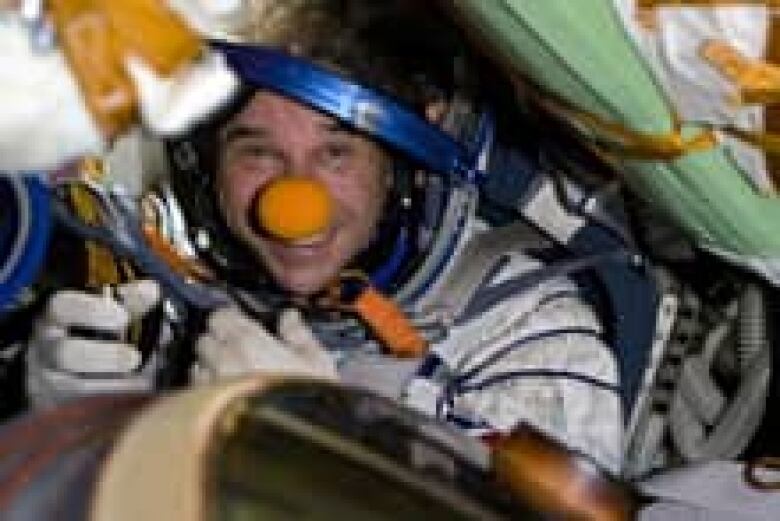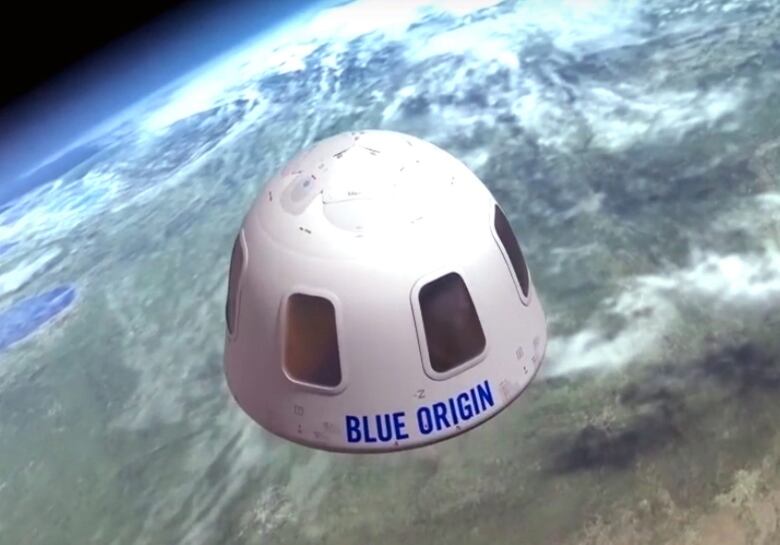Got a few million to spare? Here are the companies vying to send tourists to space
Space Adventures sells trips to the International Space Station for about $50M US

Travel to the final frontier is becoming increasingly accessibleas the race to send tourists to space heats up.
SpaceX founder Elon Musk is expected to give more details tomorrow on his company's plans for colonizing Mars. The billionairehas said he hopes to send humans to the Red Planet as soon as 2025.
But those itching to get off Earthsoonerhave some other options.
Several companies offer experiences such as visits to the International Space Station (ISS) or trips 100 kilometres above the Earth for a hefty price.
- SpaceX could send craft to Mars by 2018
- BLOG|Despite tragedy, Virgin Galactic presses on: Bob McDonald
Space Adventures
The U.S.-based company Space Adventures is the first and only to send non-astronauts to space. In 2001, it leased a seat on the Russian Soyuz spacecraft and sent millionaire Dennis Tito to the ISS.
The company has since sent seven people on eight separate flights. (One person went twice.)
"We're affording them the opportunity of experiencing something that 560 or so people have ever experienced, so it's a very unique opportunity," said the company's president, Tom Shelley.
After a four-month training period, these tourists spend between eight and 15 days at the space station. Once on board, they are mostly self-sufficient, and they're instructed to stayout of the crew's way.

But sometimes, Shelley said, it's nice for the astronauts to see a new face.
"If you're living on the space station for six months and someone comes up to visit for a couple weeks, it's quite a nice distraction it's fun to show a visitor around your home."
So far, only the super-rich have been able to afford the experience; Shelley concedes that it's currently only available to "very successful individuals."
The current price tag for a trip is about $50 million US, which is up from the $20 million that Tito paid in 2001. And the company hasn't flown anyone to space since 2009, whenCanadian Guy Lalibert went up for $35-40 million.
The program hit a snag when NASA retired its space shuttle program and instead got its astronautsto the ISS by leasing the free seats, taking the spots away from would-be space tourists.
The Soyuz has also recently doubled the number of trips it makes to the ISS, from two per year to four. That freed up a rare spot for singer Sarah Brightman, who was supposed to go in 2015. But she backed out, citing personal reasons.
Still, Soyuz seats remain very limited.

NASA is building a new spacecraft, but until that's up and running, Space Adventures will have to wait.
Shelley said he hopes to resume sending tourists to the ISS once NASA has its new rocket up and running, which would once again free up space on the Soyuz.
And if all goes according to plan, he said the next tourists will get an added bonus: after spending time at the space station, they'll do a flyby of the moon on their way back to Earth on a special lunar rocket that will come as close as 100 kilometres to the surface.
In the meantime, other companies are trying to edge into the space tourism game. And the most serious competitors to Space Adventures are Blue Origin and Virgin Galactic, both backed by billionaires.
Virgin Galactic
Virgin Galactic, owned by Richard Branson, is offering something a little closer to Earth and for considerably cheaper. It will take passengers to an altitude of about 100 to 160 kilometres, for around $250,000 US.
The company had planned to start these commercial flights in 2015, but suffered a massive setback when one of its rockets broke upduring a manned test flight in 2014. One of the two pilots in the craft was killed and the other was seriously injured.

The company has not announced when it will resume commercial flights, but says it is steadily working toward that goal.
Blue Origin
Blue Origin recently announced a new rocket called the New Glenn, named after John Glenn, the first American to orbit the Earth.
The company, owned by Amazon founder Jeff Bezos, says the rocket is designed specifically to send people and commercial satellites into space.
The company advertises that it will send six people in a capsule 100 kilometres above Earth. Bezos said in March that he plans to send manned test flights in 2017, with the goal of carrying out commercial flights by 2018.
Bezos has not yet said how much the flights will cost.
But should we do it?
While the thought of enjoying the view of Earth from space while sipping on a margarita may seem appealing, there are some who think we should stop and consider what we're doing before barrelling ahead.
Robert Zubrin, a Colorado-basedaerospace engineer,president of the Mars Society and author of the book The Case for Mars, has long advocated for colonizing Mars.
But hedraws a hard line between space colonization and space tourism.He's critical of companies like Space Adventures, saying the trips it facilitated don't do anything to advance science and technology.

"[It] didn't open the mass market," said Zubrin. "The number of people who are willing to spend millions of dollars on that kind of vacation is really rather low.And most people who do have that money would prefer to go to Tahiti for 1/100th the cost."
Shelley has a different viewpoint, likening space tourists to the tourists aboard early transatlantic voyages.
"They really started to push the boundaries and make those voyages routine, and that's what we're trying to do [with space]."
Corrections
- An earlier version of this story said John Glenn was the first American in Space. He was the first American to orbit the Earth.Sep 27, 2016 11:00 AM ET












_(720p).jpg)


 OFFICIAL HD MUSIC VIDEO.jpg)
.jpg)



























































































